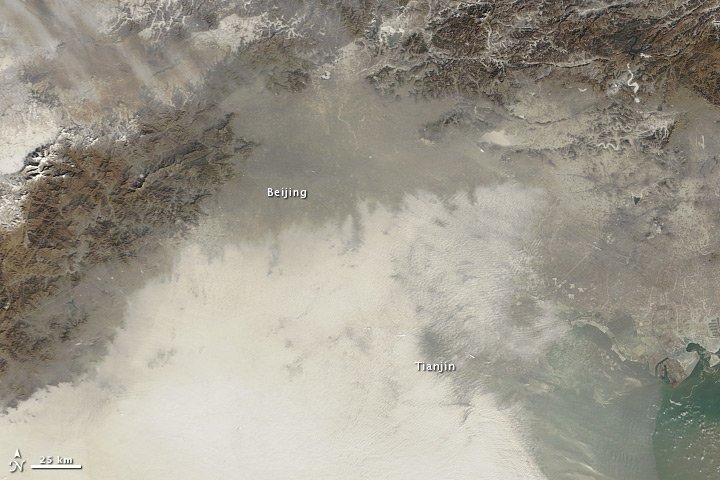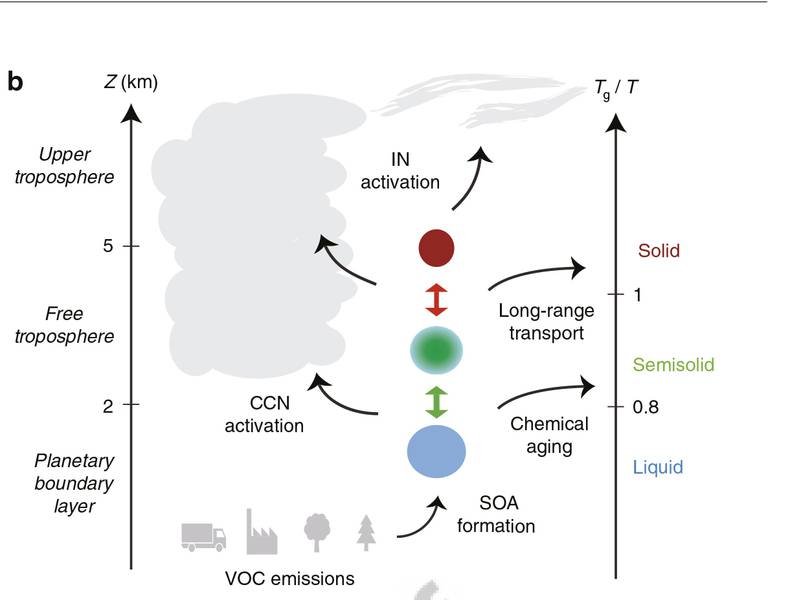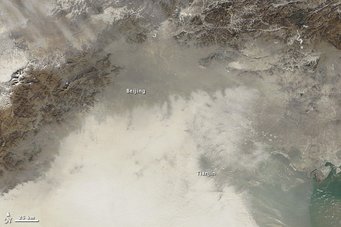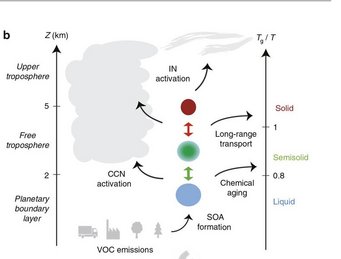Fine organic particles in the atmosphere are more often solid glass beads than liquid oil droplets
Glassy solid particles can facilitate long-distance atmospheric transport of hazardous organic pollutants
Secondary organic aerosols (SOA) are formed upon oxidation of volatile organic compounds in the atmosphere. They account for a large fraction of fine particulate matter and have a strong influence on regional and global air quality. Traditionally, SOA particles were assumed to be oily liquid droplets. Depending on chemical composition, temperature, and humidity, however, SOA particles can also adopt a glassy solid phase state, as revealed in recent studies. Whether the particles are liquid or solid makes a big difference for how they interact with clouds and trace gases and how they can influence climate and public health. So far, however, it was unclear if and where in the atmosphere SOA particles are liquid or solid. A new study of an international team of scientists including researchers from the Max Planck Institute for Chemistry in Mainz and the University of California in Irvine, USA, provides insight into the global distribution of organic particle phase state in the atmosphere.

“We found that SOA particles are mostly liquid near the Earth’s surface, and glassy in the rest of the atmosphere”, explains Manabu Shiraiwa, first author of the study recently published in the Open Access journal “Nature Communications”. Shiraiwa, a former group leader at the MPI for Chemistry in Mainz, works now as Assistant Professor at the Chemistry Department at the University of California, Irvine.

Glassy SOA particles can shelter organic pollutants from degradation by atmospheric oxidants, which explains why high concentrations of such pollutants are observed not only close to anthropogenic sources but also in remote marine and polar regions. Whether SOA particles are glassy or liquid, however, depends strongly on their chemical composition and on ambient temperature, and relative humidity. Accordingly, the molecular composition and related physicochemical properties of SOA need to be known for a reliable assessment of particle phase state and effects, but they were not well constrained in earlier studies.
“For the first time, we could implement a sophisticated molecular description of the physical and chemical properties of SOA particles in a state-of-the-art global model to compute the spatial and temporal variability of SOA phase state in the atmosphere”, says Ulrich Pöschl, director of the Multiphase Chemistry Department at the MPI for Chemistry. Jos Lelieveld, director of the Atmospheric Chemistry Department at the Mainz´ institute, adds that “further studies are planned to quantify the effects of SOA phase state on clouds, climate, air quality and public health”.

